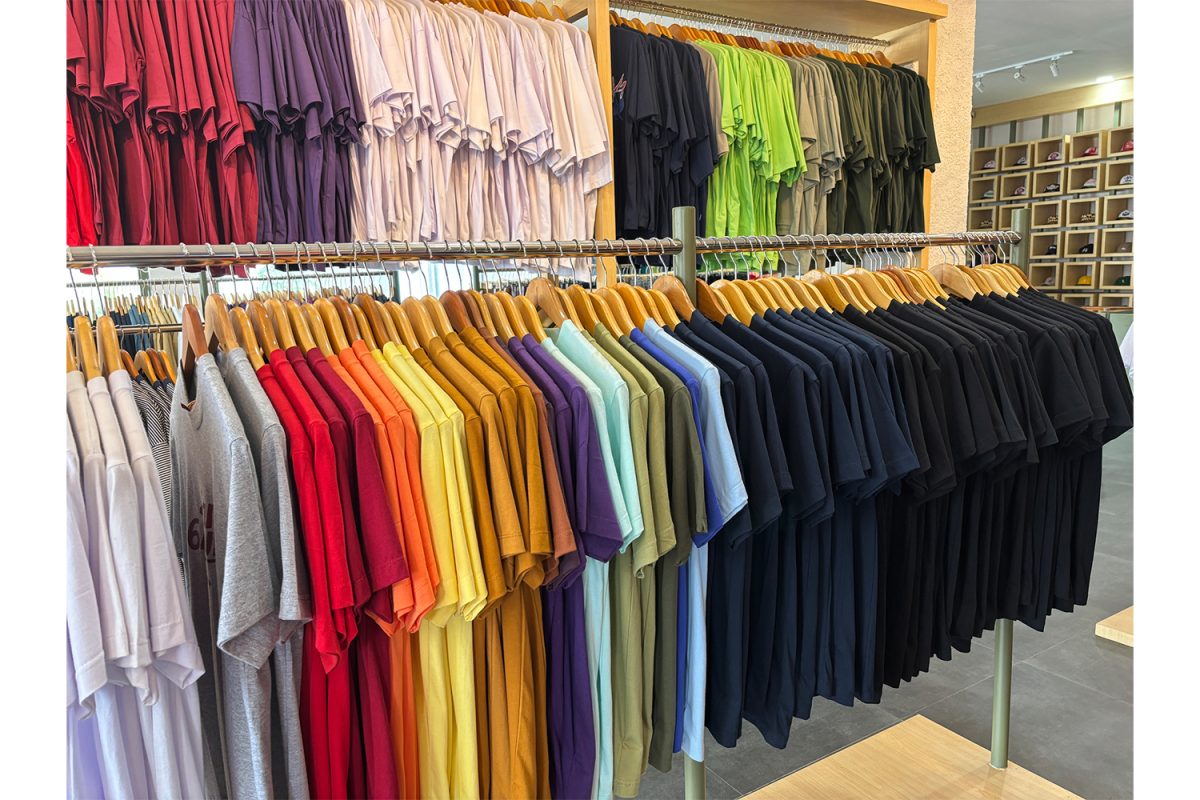Alix Earle just brought back the skinny jean. Whether you like this old trend or not, I say it is both good and bad.
Old fashion trends, like skinny jeans, have been making their way back into modern fashion for quite some time now. As they should. Old trends, like baby tees, baggy jeans, knee-high boots, animal print, faux fur, and much more, should always find life again. And there is one place you can find these old fashion pieces authentically — a thrift store.
Why are we buying “new” trendy clothes, when second-hand stores carry these items and probably have for years? Every piece of clothing deserves a second, third, and fourth chance, and it is sustainable.
Though Earle seemed to bring back this trend, it wasn’t all her – she campaigned and collaborated with the company Frame. Together they created two pairs of jeans – one pair for $128 and the other $148. This is not only unsustainable when they exist at a second-hand store with probably better quality, but it is also wildly expensive, for what? To prove this, I went to the thrift store myself. One pair of skinny jeans? A measly $5.
When we thrift clothing items instead of investing in overpriced fashion items, it allows them to recirculate into closets. Then, when the trend is no longer, there is no buyer’s remorse for the $148 pair of jeans that you wore for two months and then never again. Sounds like a win-win situation to me.
Purchasing second-chance clothing items is also more beneficial to the environment. Earthday.org mentions harmful dyes and toxic substances are used in clothing production. Producing new clothes admits greenhouse gases, and synthetic fibers, like polyester, come from fossil fuels, making up 70 percent of our clothing. Microfibers are also factored in whenever we wash our new clothing — shedding and making their way into freshwater, the ocean, and the air.
Although it is quite outlandish, the real issue doesn’t necessarily completely lay with Alix Earle’s expensive jeans.The problem is fast fashion. Most people will see Earle’s price for her jeans and turn to their trusty alternative — Shein.
Shein and other fast-fashion industries thrive off cheap retail and old trends that have resurfaced. The Round Up states these textile industries produce 100 billion clothing items a year, adding to 42 million tons of plastic waste per year. Not only that, but 92 million tons of clothing end up in landfills every year. The overproduction from fast fashion causes an excess amount of clothes in donation stores and landfills.
There are some simple solutions to this problem, one being a website called Nuuly. Nuuly is just one example of many monthly clothing rental shops where customers can pick out six new items from higher-end brands to interchange in their wardrobe each month. At the end of the month, they pick six new items and send the others back, and they even offer the option to buy some of the pieces. Nuuly also has student discounts for college students.
Another solution is to decide whether a thrift store may have this same item before buying new. For example, ask yourself: Would the thrift store have a basic pair of skinny jeans? If the answer is yes, which it is, head to your local second-hand stores to check it out. Not only is it cheaper, but you also don’t have to wait for shipping — And no one likes waiting.
Iowa City has tons of local thrift stores at your convenience, including but not limited to Goodwill, Stuff Etc., Crowded Closet, The Salvation Army, and much more.
When we as a community can realize purchasing new items at any given time is just adding to the overcrowding of our closets, donation stores, and landfills, then we can finally make a difference in the clothing waste epidemic. Go shop used!



